

Pedal Points and Simson Lines
by
Hieu Huy Nguyen
Our Goal is to investigate the behavior of the pedal triangles and figure out for which points (inside or outside the triangle) does create a degenerative triangle, which is called the Simson Line.
We begin by creating an arbitrary triangle with its pedal triangle and pedal point. The figure below displays an illustration of a triangle, pedal triangle, and pedal point.
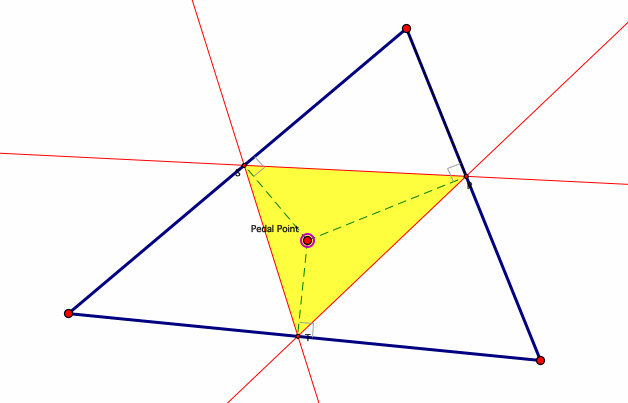
To explore, we use the GSP file to move the pedal point around to until we discover a point where the pedal triangle degenerates (becomes just a line). We quickly discover that there are no pedal points within the triangle which creates a degenerative triangle; however, when we move the points onto a given vertex, a degenerative triangle is formed. The figures below display an illustration of vertex points in which the degenerative triangle is formed.
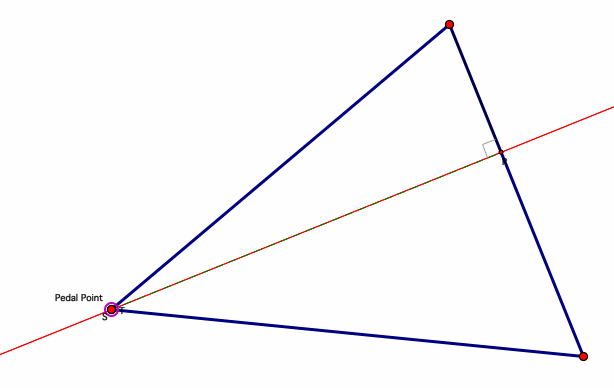
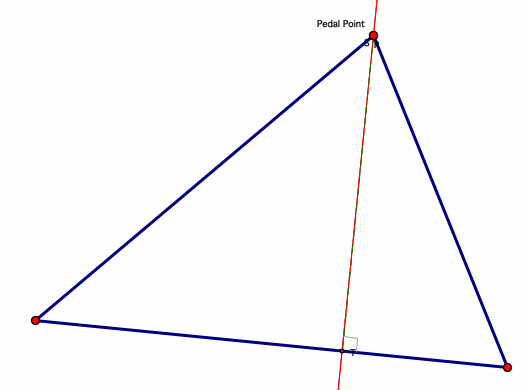
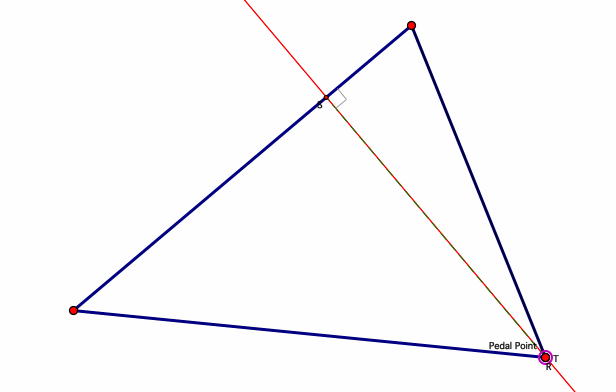
The results indicate that a Simson Line as formed. These three Simson Lines formed are also the lines which are perpendicular to the opposite side of the vertex which the pedal point is located.
Next, we explore the different points outside the triangle using the GSP file. We quickly learn that moving the pedal far away doesn’t create a degenerative triangle; however, there are some points near the triangle which creates the Simson Line. The figures below display some results of moving the pedal point in locations near the outside of the triangle.

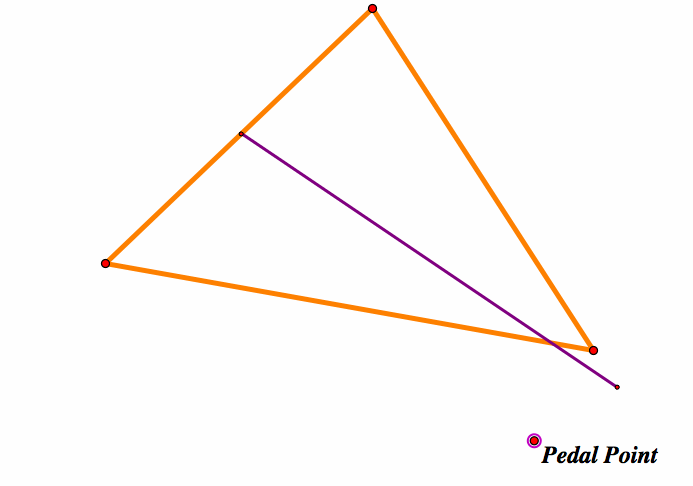
Based on knowledge of geometry, we assume that the pedal points which create a Simson Line forms a circular motion around the triangle, so we can then explore the circumcircle which is created by our original triangle. From this exploration, it is illustrated that all pedal points on the circumcircle createsa Simson Line.

Once the circumcircle is formed, we can use the trance & animate tools on GSP to observe the changes of the pedal triangle as the pedal point moves along the circumcircle of the original triangle. The GSP file 2 will allow you to view the animation of the tracing of the pedal point along the circle. In conclusion, we’ve determined that a Simson Line is formed by pedal points located on all vertices of the triangle as well as all points on the circumcircle of the triangle.
Go back to Hieu's HOME PAGE
Go back to EMAT 6680 HOME PAGE